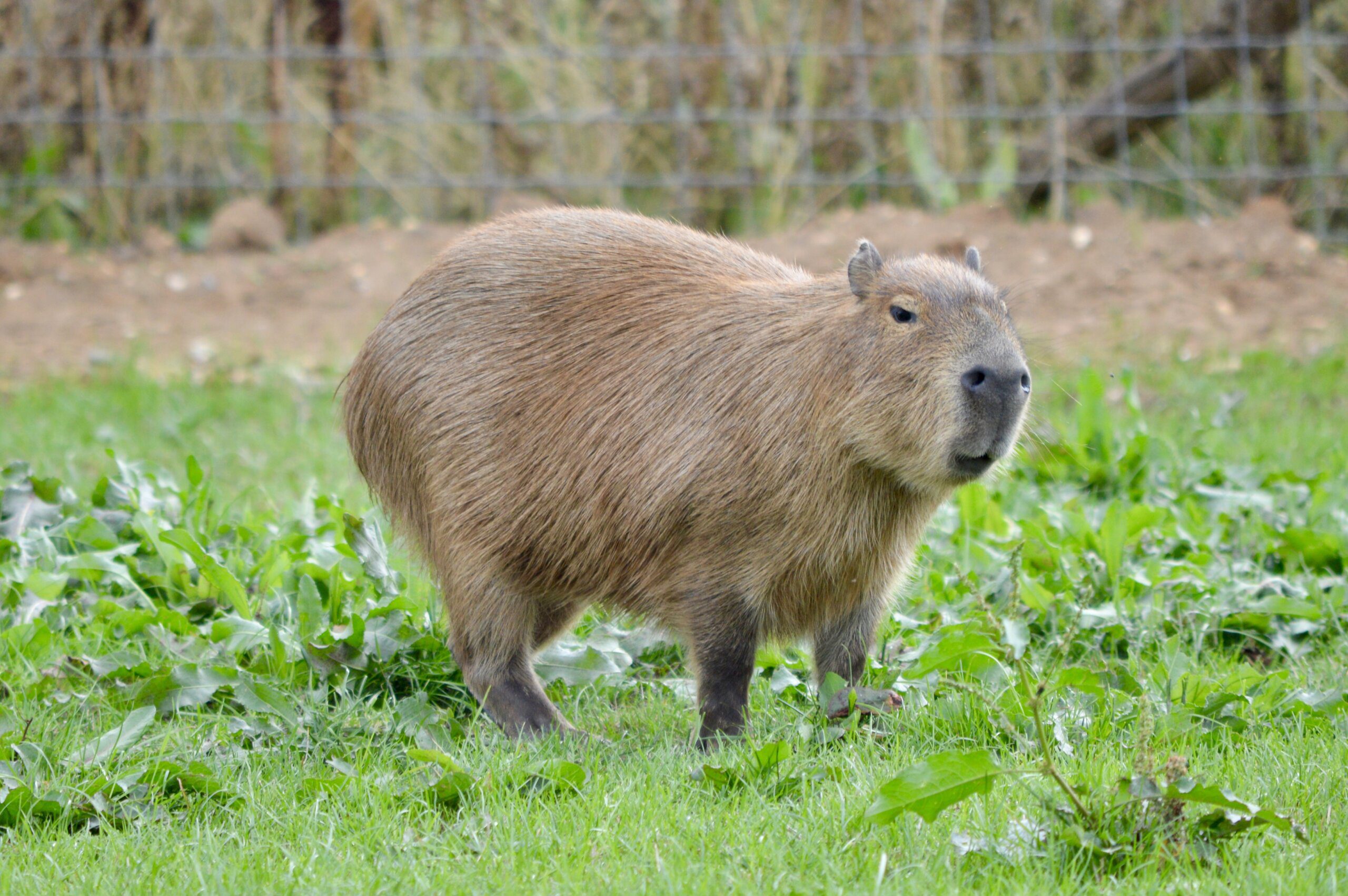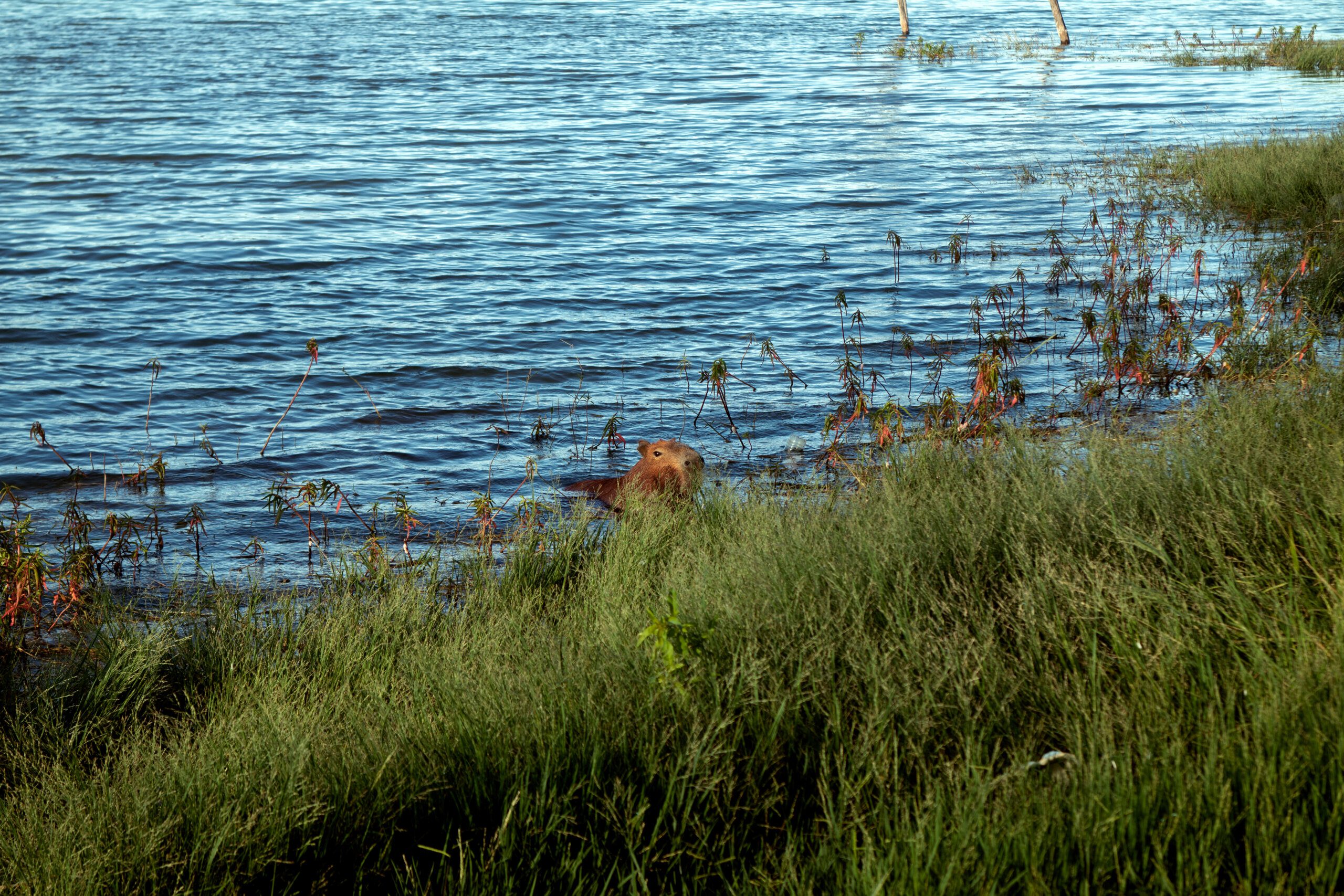Imagine a creature that embodies the pure essence of friendliness. Picture a furry, lovable creature that resembles a giant guinea pig, with a warm smile and a gentle nature. Look no further, because capybaras are here to steal your heart. Known as the friendly creatures of the animal kingdom, capybaras are adorned with an aura of approachability that captivates all who encounter them. With their distinct appearance and amiable demeanor, capybaras effortlessly attract attention and affection from both humans and their fellow animal companions. Prepare to be enchanted by the irresistible allure of these delightful creatures.
Capybaras: The Friendly Creatures

Physical Characteristics
Size and Shape
Capybaras are known for their large size and distinctive shape. They are the largest rodents in the world and can reach an impressive weight of up to 150 pounds. With a head and body length averaging around four feet, they have a compact and stocky build. Their barrel-shaped body is complemented by short legs and a long, slender tail. Capybaras have a charmingly rounded face with small ears and eyes, which gives them a friendly and approachable appearance.
Fur and Coloration
The fur of capybaras is another interesting feature worth noting. They have a dense and coarse coat that consists of short, bristly hairs, which can be both rough and soft to the touch. Capybara fur is known for its color variation, ranging from golden-brown to reddish-brown shades. This diversity in coloration allows capybaras to blend seamlessly with their surroundings in their natural habitat, providing them with a natural camouflage.
Natural Habitat
Geographical Distribution
Capybaras are native to South America and are found in a variety of countries, including Brazil, Venezuela, Colombia, and Argentina, among others. They are particularly abundant in the wetlands and marshes of the region, where they thrive in the warm and tropical climate. Capybaras are adaptable creatures and can also be found in savannas, forests, and even near bodies of water such as rivers, lakes, and ponds.
Aquatic Environments
One of the unique aspects of capybaras is their remarkable adaptation to aquatic environments. They are semi-aquatic creatures, and their webbed toes make them excellent swimmers. Capybaras can often be seen fully submerged in water, with only their nostrils and eyes above the surface. They are also known to enjoy mud baths, which help regulate their body temperature and provide protection against parasites. These natural habitats allow capybaras to find abundant food sources and escape potential predators.

Social Behavior
Group Structure
Capybaras are highly social animals and are often found in large groups, known as herds or communities. These groups typically consist of several individuals, ranging from around 10 to 30 members. Within these herds, there is a hierarchical structure, with a dominant male leading the group. Capybaras have a strong sense of community and engage in social behaviors such as vocalizations, grooming, and even sharing resting spots with one another.
Communication
Communication plays a vital role in the social life of capybaras. They use a combination of vocalizations, body language, and scent marking to convey messages within their group. Capybaras emit various sounds, including purrs, whistles, and barks, to communicate different emotions and intentions. They also use scent marking, where they rub their scent glands on objects or other group members, to establish and maintain social bonds. Body language, such as postures and movements, also plays a significant role in their communication repertoire.
Playfulness
Capybaras are known for their playful nature, which adds to their charm. They engage in various forms of play, including chasing, wrestling, and even rolling around in the water. Play serves multiple purposes for capybaras, such as strengthening social bonds, practicing skills needed for survival, and reducing stress. Their playful demeanor brings joy and entertainment not only to their own kind but also to humans lucky enough to observe them in their natural habitat.
Diet and Feeding Habits
Herbivorous Diet
Capybaras are herbivores, meaning their diet consists entirely of plant matter. They have adapted to feed on various types of vegetation, including grasses, aquatic plants, fruits, and tree bark. Being large grazers, capybaras have a unique digestive system that allows them to efficiently break down tough plant materials. Their specialized gut and fermentation processes enable them to extract maximum nutrients from their plant-based diet.
Unique Feeding Adaptation
One fascinating feeding adaptation of capybaras is their ability to re-ingest their own feces, a process known as coprophagy. While it may sound unpleasant, coprophagy is actually a vital part of their digestive process. By consuming their feces, capybaras are able to extract additional nutrients that were not fully absorbed during the initial digestion. This behavior is an efficient way for capybaras to maximize their nutrient intake and adapt to their herbivorous diet.

Reproduction and Parenting
Mating Behavior
Capybaras have a unique mating system where a dominant male, known as the stallion, mates with multiple females within the group. During mating season, the stallion actively defends his harem and plays a vital role in ensuring the survival of the young. Female capybaras experience a period of receptivity lasting around 24 hours, during which multiple copulations may occur. This promiscuous mating behavior helps maximize genetic diversity within the group.
Pregnancy and Birth
After a gestation period of approximately 150 days, female capybaras give birth to a litter of usually four to seven young, called pups. The birth usually takes place on land, and the pups quickly become mobile and can swim within hours of being born. Capybaras possess a strong instinct to care for their offspring, and the young remain close to their mother for several months, receiving nourishment and protection until they are weaned.
Care for Young
Capybara mothers are highly nurturing and provide exceptional care for their young. They exhibit a behavior called “communal nursing,” where multiple females in the group participate in nursing and caring for the young. This cooperative parenting strategy ensures the survival and well-being of the entire group’s offspring. As the young capybaras grow, they learn essential life skills from their parents and other members of the group, helping them develop into self-sufficient individuals.
Coexistence with Other Species
Interactions with Humans
Capybaras have a generally peaceful coexistence with humans and are often viewed with affection and admiration. In some rural areas of South America, they are even considered part of the local culture and are valued for their meat and fur. However, as human populations expand and encroach upon their natural habitat, conflicts can arise. Capybaras may venture into agricultural areas, causing crop damage, and encounters with vehicles can pose a threat to their safety.
Interactions with Predators
Capybaras have several natural predators in their ecosystems, including jaguars, caimans, and large birds of prey. However, their social nature and strong herding instincts provide them with a collective defense mechanism against potential threats. Capybaras communicate effectively within their group and alert others to the presence of predators. Being alert and astute, they are often able to evade predators and escape to the safety of the water or dense vegetation.
Cultural Significance
Folklore and Mythology
Capybaras hold cultural significance in many South American folklore and mythological traditions. In some indigenous cultures, capybaras are believed to possess special powers or be messengers between humans and spirits. They often feature in folklore stories as wise and resourceful creatures, embodying qualities such as communal harmony, adaptability, and humility. These tales and beliefs reflect the admiration and respect that capybaras have garnered throughout the centuries.
Symbolism in Different Cultures
Capybaras also hold symbolic meanings in different cultures. In some regions, they are seen as symbols of abundance, prosperity, and good fortune. In others, they represent patience, adaptability, and community. The unique characteristics and behaviors of capybaras have captured the imagination of people, making them cultural icons and symbols of positive attributes in various societies.
Ecological Importance
Ecosystem Engineers
Capybaras play a crucial role as ecosystem engineers in their habitats. Their grazing habits help shape and maintain vegetation patterns, benefiting both the plant communities and other animals. By selectively grazing on certain plant species, capybaras create a diverse mosaic of vegetation, promoting biodiversity and enhancing the structure of the ecosystem. Their influence as grazers can have cascading effects on the overall health and balance of the habitat they inhabit.
Role in Wetland Conservation
Due to their dependence on aquatic environments, capybaras are considered indicator species for wetland conservation. Their presence and abundance are indicative of healthy wetlands, as they require access to water bodies and suitable vegetation for their survival. Protecting capybara populations and their habitats is crucial for maintaining the delicate balance of wetland ecosystems and preserving the biodiversity that depends on these unique habitats.
Conservation Status
Threats to Capybaras
While capybaras are not currently considered globally threatened, certain localized populations face threats due to habitat loss, human-wildlife conflict, hunting, and illegal pet trade. As human activities continue to encroach on their natural habitats, it is essential to implement measures to mitigate these threats and ensure the long-term survival of capybara populations.
Conservation Efforts
Several conservation organizations and initiatives work towards protecting capybaras and their habitats. These efforts involve habitat restoration, raising awareness about the importance of capybaras in ecosystems, and promoting sustainable practices to mitigate human-wildlife conflicts. Collaboration between scientists, local communities, and governments is vital to safeguard the future of capybaras and preserve their ecological role in South American landscapes.
Capybaras as Pets
Legality and Regulations
Capybaras are often regarded as intriguing and lovable creatures, which may lead some individuals to consider keeping them as pets. However, it is important to note that ownership of capybaras may be subject to various legal restrictions and regulations. Different countries and regions have specific laws in place governing the keeping of exotic animals, including capybaras. It is essential to research and understand the legal requirements and ethical implications associated with keeping capybaras as pets.
Considerations for Ownership
Keeping capybaras as pets requires a significant commitment and specific considerations. Capybaras have unique needs and specialized care requirements that must be met to ensure their health and well-being. They need ample space, proper socialization, and a diet that mimics their natural feeding habits. Additionally, finding a reputable and experienced exotic animal veterinarian is crucial to provide regular health check-ups and guidance on their care. Prospective owners must be prepared for the responsibilities and challenges that come with keeping capybaras as pets.
In conclusion, capybaras are fascinating and friendly creatures that captivate our hearts with their unique characteristics, social behaviors, and important ecological role. From their physical attributes and playful nature to their significant presence in various cultures and ecosystems, capybaras continue to amaze and inspire admiration. It is our shared responsibility to ensure their conservation, protect their habitats, and appreciate their valuable contributions to the natural world.



